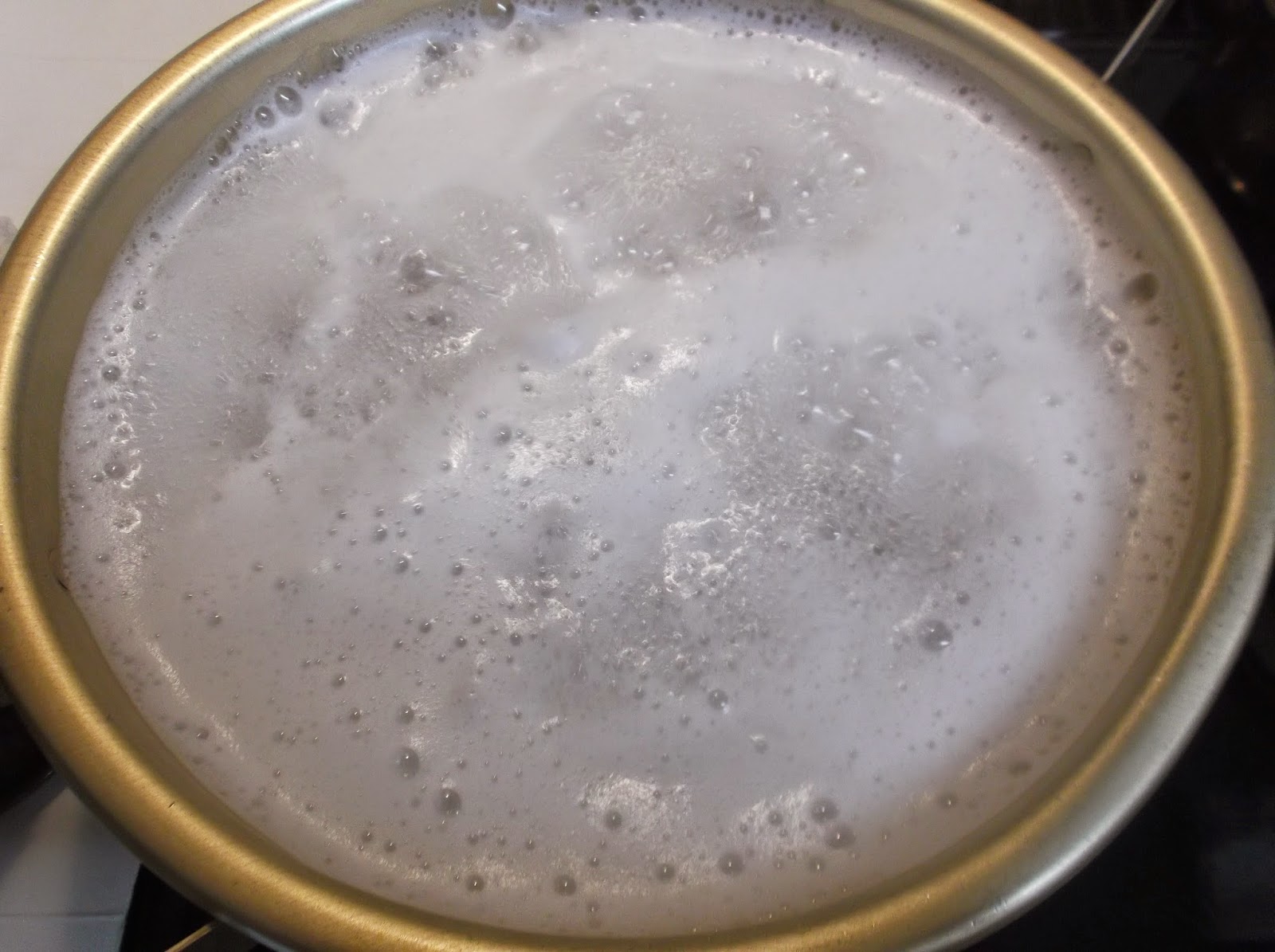Two days ago, my son remarked, "I want to have fukinoto tempura!" So, I bought three packs of hegi soba today.
二日前、息子がこう言いました、「フキノトウの天ぷらが食べたい!」。と言うわけで、今日、へぎそばを3袋買いました。
Hegi soba is a specialty of Niigata. Hegi refers to a rectangular wooden tray in which the soba is served. Hegi soba contains funori (a type of seaweed).へぎそばは新潟の名産品です。へぎとは、そばを盛る長方形の木製のトレイのことで、へぎそばには布海苔が入っています。
Images of hegi soba/へぎそばの画像
Images of funori/布海苔の画像
I also bought one pack of fukinoto.
また、フキノトウも1パック買いました。
I know the local people would laugh at me for purchasing fukinoto. I know I could have collected them for free if I had gone to an appropriate place, but I simply didn't want to do that.
フキノトウを買ったなんて言ったら、地元の人に笑われると思います。適当な場所に行けば、タダで手に入れることができます。ただ、そうしたくなかっただけのことです。
I boiled the three packs (200 g x 3 = 600 g) of soba in a large pot for 5 min.
そば3袋(200 g x 3 = 600 g)を大きな鍋で5分茹でました。
I just can't make these hegi soba noodles into coils beautifully...
へぎそばを美しく巻くのはどうもできません。
Then, I started making tempura.
Gyoniku (fishmeat) sausage:
それから天ぷらを作り始めました。
魚肉ソーセージ:
1. Kakiage (onion, carrot, dried shrimp)
2. Kabocha
3. Gyoniku sausage
4. Fukinoto
1. かき揚げ(玉ねぎ、にんじん、干しエビ)
2. かぼちゃ
3. 魚肉ソーセージ
4. フキノトウ
I mixed two large eggs with 1 1/2 cups (200 + 100 ml = 300 ml) of water.
卵L2個を水1.5カップ(200 + 100 ml = 300 ml)を混ぜました。
Then, I added about 2 cups (2 x 200 ml) of flour.
次に、小麦粉を2カップ(2 x 200 ml)程度混ぜました。
Fukinoto first.
まずはフキノトウ。
Kabocha next.
次にかぼちゃ。
Gyoniku sausage next.
次は魚肉ソーセージ。
I had hegi soba with shredded naganegi and wasabi.
へぎそばは長ネギとワサビで食べました。
I gave up making kakiage. Why? The three types of tempura were more than enough. I didn't want to make more tempura!
かき揚げを作るのは諦めました。何故かって?3種類の天ぷらだけでも十分過ぎて、これ以上天ぷらを作りたくなかったんで。


















10 comments:
You did not remove the harshness of the fukinoto by soaking them beforehand? My plants are doing well and I have much more fukinoto plants than before. Hopefully next year there will be enough to have a taste. They are now in full bloom. Besides, I found a giant field of butterburs at a lake side but I think they are a different variety because the flowers were some sort of light purple coloured but the same in shape and hight. I will post some pictures.
Soba containing seaweed sounds very delicious.
Kiki: You don't have to remove the harshness beforehand because the high heat of the oil decomposes much of the harsh components.
I deep-fried them at a low temperature of 160C for a relatively long time (3 minutes or so), so they lost much of their harshness and bitterness.
Light purple? That sounds beautiful! Maybe you can identify the plant with your book on wild edible plants?
Hegi soba is both firm and sleek, and is quite different from common types of soba noodles.
Yes, found it. Sadly our variety of butterbur (the light purple-pink) is not edible at all because it contains high doses of pyrrolizidine alkaloids.
Funori sounds (and looks!) very interesting. I will see if I can find it here at least separately (I don't think I would find these soba noodles). I have recently started to use regularly aonori on my rice in order to add less soy sauce and I like the taste more and more (to be frank I become addicted).
Your tempura looks perfect. It makes me want to make asparagus tempura (I have bought a bunch once more for this weekend).
I also have lots of soba noodles and keep on forgetting to cook them... I have fallen into a monotony of only white rice or bread at every meal... It's a bad habit.
Sissi: Here's a thread on eGullet where I posted about hegi soba, if you are interested:
http://forums.egullet.org/topic/15533-soba/?p=1041062
Scroll down to post #52, where I posted photos of children making hegi soba.
It's reddish (purplish?) when raw, but is greenish when processed.
Thank you for the link. It's very interesting indeed.
May I know what type of flour did u use?
Jay: Hakurikiko, which is low-gluten wheat flour. This type of flour is usually used to make tempura. In the United States, cake flour should be similar to hakurikiko.
Can I come over for dinner ? lol ...
Miko: Coming all the way for such a humble dinner? (laugh)
Post a Comment